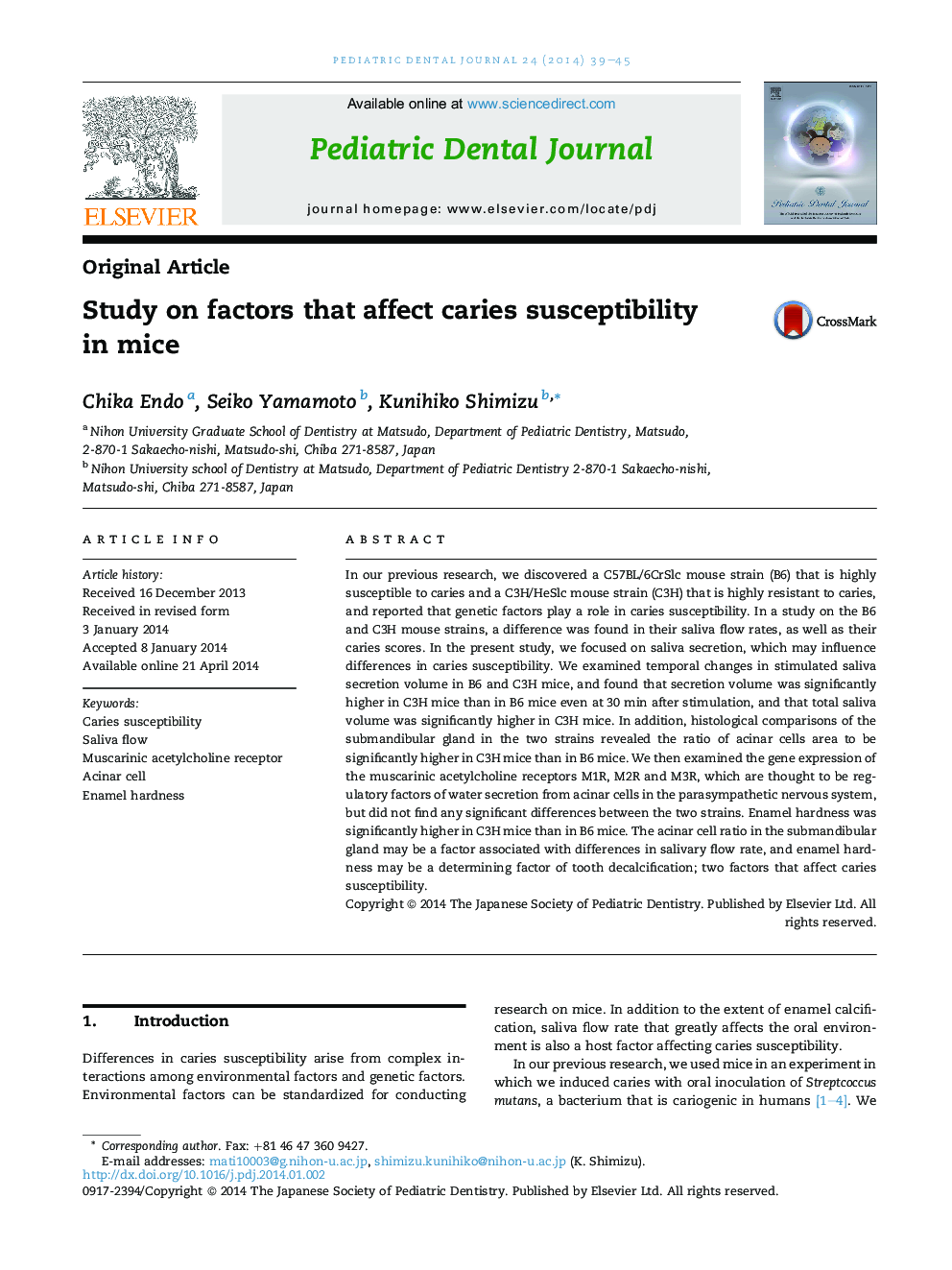| کد مقاله | کد نشریه | سال انتشار | مقاله انگلیسی | نسخه تمام متن |
|---|---|---|---|---|
| 3171504 | 1199873 | 2014 | 7 صفحه PDF | دانلود رایگان |
In our previous research, we discovered a C57BL/6CrSlc mouse strain (B6) that is highly susceptible to caries and a C3H/HeSlc mouse strain (C3H) that is highly resistant to caries, and reported that genetic factors play a role in caries susceptibility. In a study on the B6 and C3H mouse strains, a difference was found in their saliva flow rates, as well as their caries scores. In the present study, we focused on saliva secretion, which may influence differences in caries susceptibility. We examined temporal changes in stimulated saliva secretion volume in B6 and C3H mice, and found that secretion volume was significantly higher in C3H mice than in B6 mice even at 30 min after stimulation, and that total saliva volume was significantly higher in C3H mice. In addition, histological comparisons of the submandibular gland in the two strains revealed the ratio of acinar cells area to be significantly higher in C3H mice than in B6 mice. We then examined the gene expression of the muscarinic acetylcholine receptors M1R, M2R and M3R, which are thought to be regulatory factors of water secretion from acinar cells in the parasympathetic nervous system, but did not find any significant differences between the two strains. Enamel hardness was significantly higher in C3H mice than in B6 mice. The acinar cell ratio in the submandibular gland may be a factor associated with differences in salivary flow rate, and enamel hardness may be a determining factor of tooth decalcification; two factors that affect caries susceptibility.
Journal: Pediatric Dental Journal - Volume 24, Issue 1, April 2014, Pages 39–45
